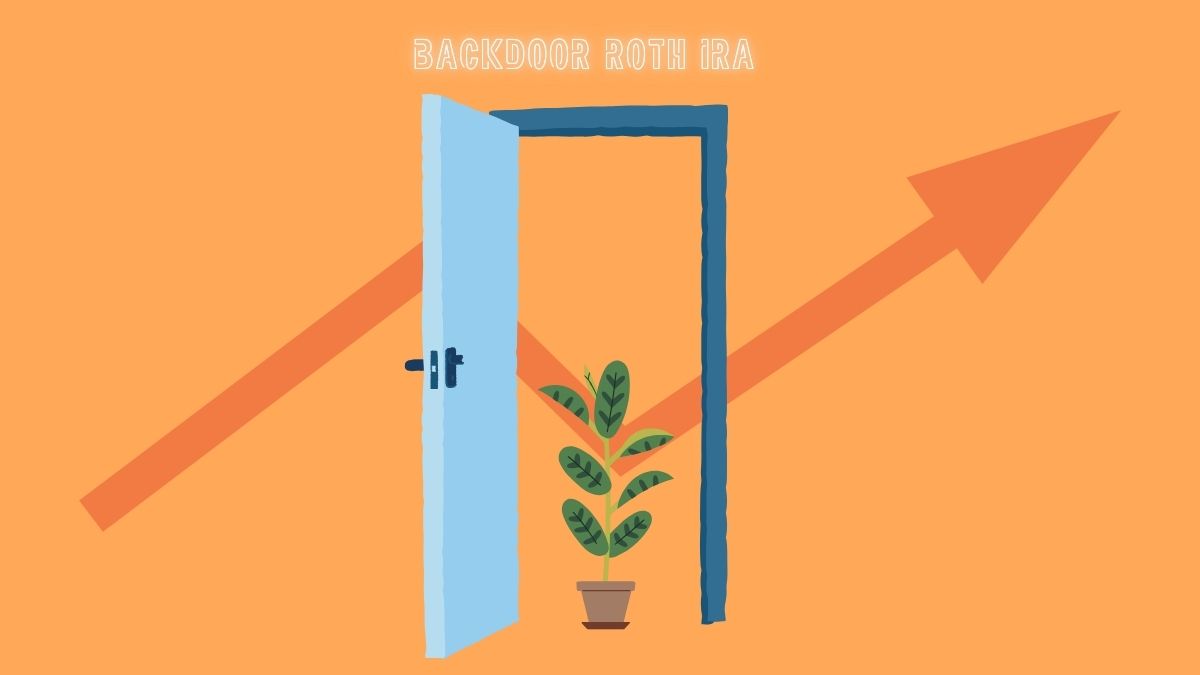Make Money
Easy Steps to Set Up a Backdoor Roth IRA

It’s a good “problem” if your income is too high to contribute directly to a Roth IRA. But don’t sweat; there’s actually a legal workaround called the Backdoor Roth IRA. Yes, it’s legal. Yes, it’s easy to do. This strategy allows high earners to still benefit from tax-free growth and withdrawals in retirement. Let’s go over how to do this and why it can make sense for you!
What’s a Backdoor Roth IRA?
A Backdoor Roth IRA is a method and strategy for high-income earners who can’t contribute directly to a regular Roth IRA because they’re over the income limit, which for 2025 is $165,000 for single filers and $246,000 for joint filers.
Step 1: Confirm that you can’t contribute to a Roth directly
This might be obvious, but double-check to make sure you can’t contribute to a Roth IRA directly based on your income limits, specifically your MAGI (Modified Adjusted Gross Income).
You can calculate your MAGI by looking at your tax return Form 1040, Line 11, using your AGI number. Your AGI is your gross income minus specific allowable adjustments, like student loan interest, retirement contributions, and educator expenses.
To calculate your MAGI, start with your AGI and add back select items such as tax-exempt interest, traditional IRA contributions, student loan interest deductions, half of your self-employment tax (if any), and passive income or losses, depending on the specific tax benefit you’re after. Although MAGI is often close to your AGI, the exact calculation can vary. If you’re unsure about your final number, your tax professional can help!
| Roth IRA Income Requirements for 2025 | ||
| Filing Status | Modified Adjusted Gross Income (MAGI) | Contribution Limit |
Single filers | Less than $150,000 | $7,000 |
| More than $150,000 but less than $165,000 | Partial contribution | |
| More than $165,000 | Not eligible | |
Married filing jointly | Less than $236,000 | $7,000 per person |
| More than $236,000 but less than $246,000 | Partial contribution | |
| More than $246,000 | Not eligible | |
Age 50+ can contribute up to $8,000 per person! If you fall under the partial contribution category, then you can use Fidelity’s calculator to determine how much you can contribute.
Step 2: Open and Fund a Traditional IRA
You can open a Traditional IRA at any brokerage or financial institution. I personally use Fidelity, but other opinions can include Vanguard, Charles Schwab, SoFi, and more. You’ll have more control over what to invest in if you choose a brokerage versus a bank.
Contribute the maximum amount you can for the year. This will be using after-tax dollars, and you can avoid a big tax hit later when you report the non-deductible IRA contribution (more on this later).
Step 3: Wait a Few Days
This is optional, but to be safe, wait a few days before going to the next step so the IRS doesn’t see the contribution and the conversion as one event.
Step 4: Convert your Traditional IRA to a Roth IRA
Now, you can convert your new Traditional IRA to a Roth IRA! Your brokerage will have the functionality to do this online, or you can call to request it. Since you contributed with after-tax money, the conversion should have little or no taxes owed.
The only exception is if you already have pre-tax IRA funds, which we’ll explain next.
Step 5: Pro-Rata Rule
If you already have pre-tax IRA funds, such as those in a Traditional IRA, SEP, or Simple IRA, you’ll need to watch out for the pro-rata rule. This means your conversion to a Roth will be treated with a mix of taxable and non-taxable dollars, and you could owe taxes on some of the conversion.
A tip to avoid this: If your employer plan allows, roll your pre-tax IRA funds into a 401(k), and you can keep the Traditional IRA balance with after-tax dollars for backdoor use. Ask your employer’s plan administrator to make sure they can handle it!
Step 6: File IRS Form 8606
Don’t forget this part when tax time comes! Your CPA or tax software will walk you through this step, but you must file Form 8606 to report the non-deductible IRA contribution and the Roth conversion. That form basically tells the IRS that you already paid taxes on the contribution, so they don’t double-tax you. Very important. We definitely don’t want to get taxed twice.
The Perks of Backdoor Roth IRA
Why do high earners use this strategy? Simple:
- Tax-free growth: Like a normal Roth, your money will grow tax-free
- Tax-free withdrawals: Qualified distributions in retirement are tax-free as well
- No RMDs: There are no required minimum distributions in a Roth, like a Traditional IRA does at age 73
- Estate planning benefits: Roth IRAs can be passed down to inheritors more efficiently
The Money Move
Seriously, if you’re a high earner who can’t contribute to a normal Roth, you can legally do a Backdoor Roth IRA to still benefit from a tax-free retirement income.
The conversion only takes a few steps, and be sure to watch out for the tax rules that your CPA or tax software rep can assist with. In fact, discuss this with them beforehand if you’re unsure if this fits into your overall plan, but most people will find it worth it!

